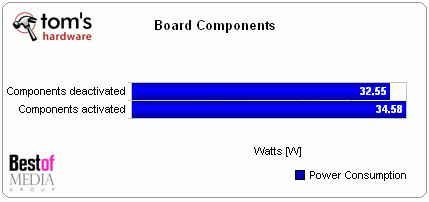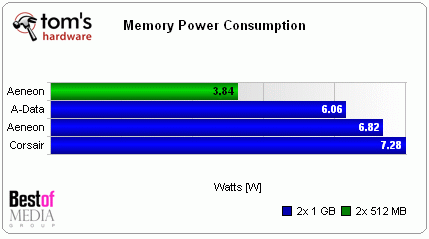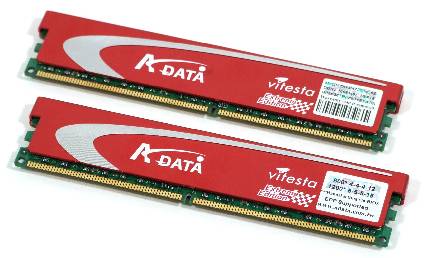Do-It-Yourself Solar-Powered PC: Hardware
Measurements: Energy Consumption For Onboard Components
We also wondered if disabling various components would affect the motherboard's overall energy consumption. To that end, we measured what happened when we disabled all the on-board components, such as Firewire, network, sound and COM ports, and learned that overall energy use dropped by 2 Watts.
Differences in energy consumption with components enabled and disabled
We left disabled all the components we didn't need, which meant everything except the network controller.
Choosing RAM: A-Data Is The Most Efficient
Memory is seldom sufficiently considered when it comes to managing energy consumption. For our solar-powered PC we measured memory modules from various vendors to see how much energy they required.
Comparing various RAM configurations
Those who want to equip their systems with 1 GB of RAM should know that this consumes about 3.8 W of power. We decided to install Windows Vista on our solar-powered PC, so we went with 2 GB instead.
When it comes to energy consumption, memory technology plays an important role. Thus, for example, you can find DDR2 modules built using from 90 nm to 110 nm technologies, which results in measurable differences in energy uptake. According to our measurements, the latest A-Data RAM modules (Vitesta Extreme Edition, DDR2-1066+) proved to be the most energy efficient. That's why we chose them for our solar-powered PC.
Get Tom's Hardware's best news and in-depth reviews, straight to your inbox.
A-Data Vitesta Extreme Edition DDR2-1066+
| 12 Volt Solar-PC-System | ||
|---|---|---|
| Component | Idle | Max load |
| PSU | 5.00 W | 14.20 W |
| CPU | 8.49 W | 38.66 W |
| Cooler | 1.00 W | 1.00W |
| Motherboard | 7.78 W | 19.71 W |
| RAM | 6.06 W | 6.23 W |
| Total: | 61.23 W | 115.60 W |
| max. 160 Watt Custom PSU |
Current page: Measurements: Energy Consumption For Onboard Components
Prev Page Motherboard Comparison Next Page Major Differences Among Hard Disks: WD Comes Out BestTom's Hardware is the leading destination for hardcore computer enthusiasts. We cover everything from processors to 3D printers, single-board computers, SSDs and high-end gaming rigs, empowering readers to make the most of the tech they love, keep up on the latest developments and buy the right gear. Our staff has more than 100 years of combined experience covering news, solving tech problems and reviewing components and systems.
-
Raigedas i bought this M2-ATX PSU (actually to of them). but i was unable to start it.Reply
1. first quick question: is it possible to start (for testing purposes) the PSU without connecting it to the computer? is it enough to short circuit J8 only to start?
2. docummentation is unclear about 10 (J6). it looks like J6 is purely for controlling stereo amplifier. but other place of the manual says "if J6 is cnnected to the motherboard". where to motherboard?
3. how should PSU be connected?
for testing i have taken 12V 7Ah lead acid battery fully charged.
connected battery "-" to J4.
battery "+" to J1.
J3: tried to leave not connected and tried to connect battery "+".
disconnected power switch cable from motherboard and connected it to J9.
connected J8 with motheboard (using little cable included in the package) where power switch was originally connected.
left J6 not connected.
J10 not connected (P0 mode). also tried P1 mode.
connected ATX and P4 (J2).
pressed power on my pc but nothing happened and no voltage on MOLEX cable.
could authors of the article (or maybe other owner of the PSU) describe how did they start the PSU?



